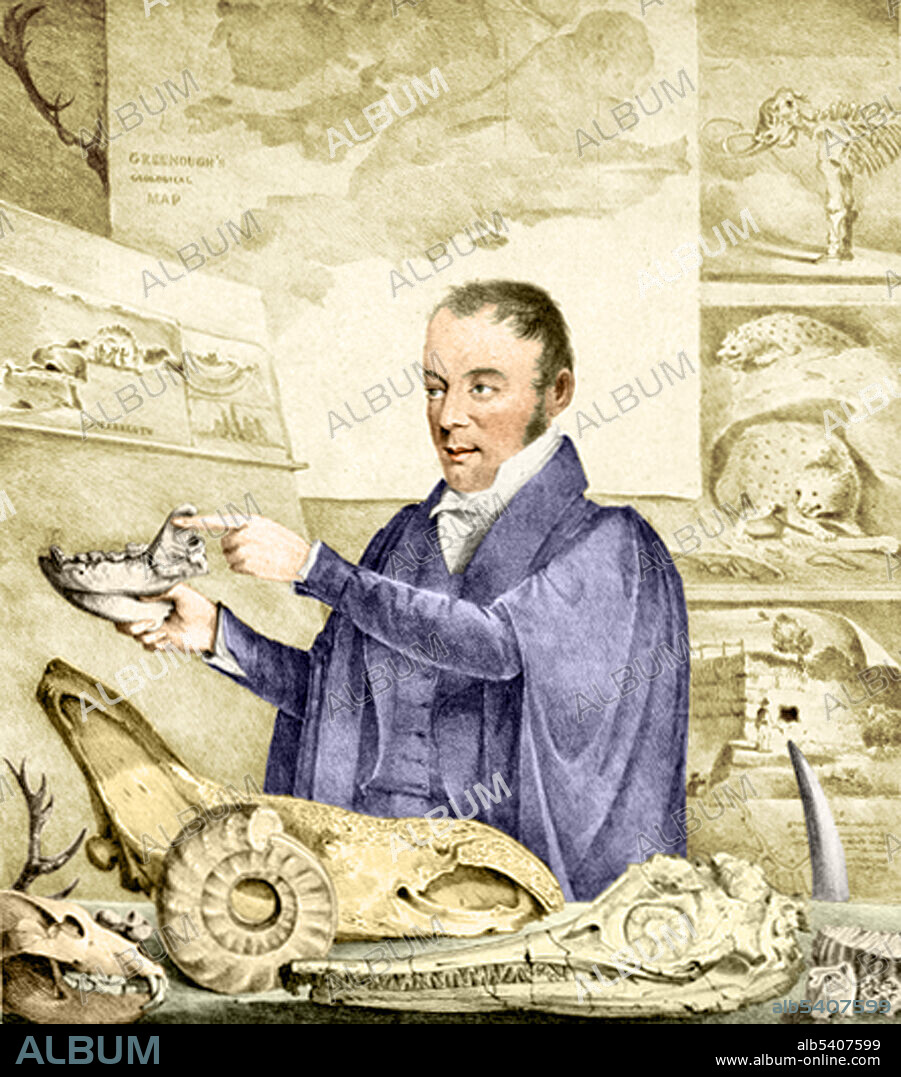alb5407599
William Buckland, English Palaeontologist

|
Añadir a otro lightbox |
|
Añadir a otro lightbox |



¿Ya tienes cuenta? Iniciar sesión
¿No tienes cuenta? Regístrate
Compra esta imagen.
Selecciona el uso:

Título:
William Buckland, English Palaeontologist
Descripción:
Ver traducción automática
Buckland giving a lecture on fossils and displaying some of his prize specimens. The long-beaked skull at the front is an Ichthyosaur, a marine reptile that belonged to a separate group from the dinosaurs. William Buckland (March 12, 1784, August, 14 1856) the English geologist and palaeontologist who wrote the first full account of a fossil dinosaur, which he called megalosaurus, or great lizard. He was a pioneer in the use of fossilized faeces, for which he coined the term coprolites, to reconstruct ancient ecosystems. Buckland was a proponent of the Gap Theory that interpreted the biblical account of Genesis as referring to two separate episodes of creation separated by a lengthy period, Early in his career he believed that he had found geologic evidence of the biblical flood, but later became convinced that the glaciation theory of Louis Agassiz provided a better explanation.
Crédito:
Album / Science Source
Autorizaciones:
Tamaño imagen:
3600 x 4093 px | 42.2 MB
Tamaño impresión:
30.5 x 34.7 cm | 12.0 x 13.6 in (300 dpi)
Palabras clave:
1800S • DIBUJO • FAMOSA • FAMOSO • FAMOSOS • HISTORIA • HISTORICO • HOMBRE • HOMBRES • ILUSTRACION • IMPORTANTE • INGLATERRA • INGLES • MAYOR • MEJORA • OBRA DE ARTE • PALEONTOLOGO • PERSONALIDAD • PERSONALIDADES • RETRATO DE HOMBRE • S. XIX • S. XVIII • SIGLO XIX • SIGLO XVIII • SIGLO


 Pinterest
Pinterest Twitter
Twitter Facebook
Facebook Copiar enlace
Copiar enlace Email
Email
